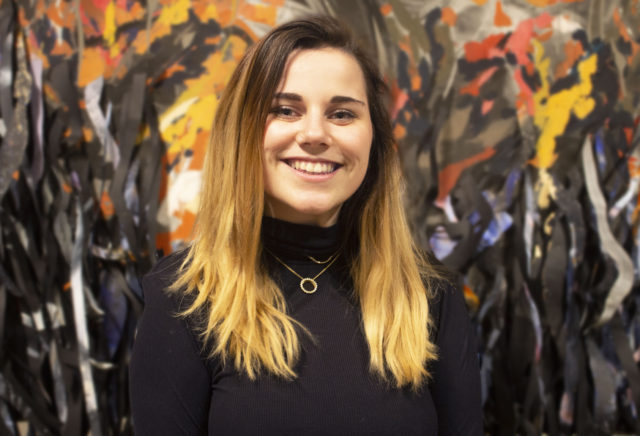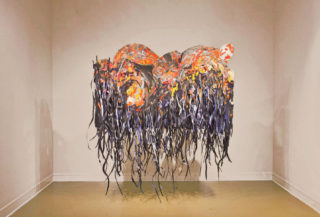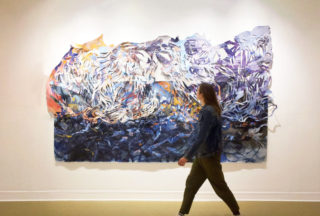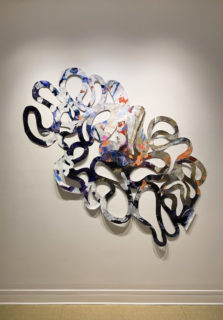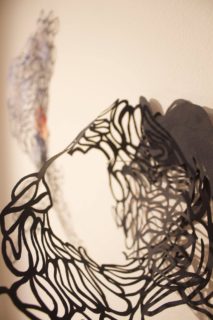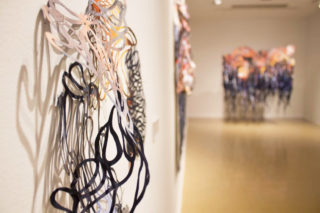After the opening of her senior exhibition in the Smith Gallery, Rebecca Pempek answered a few questions for us about her work and sources of inspiration, in addition to her plans for the future. Read below!
- Name, Hometown: Rebecca Pempek | Putnam, CT
- What is your primary medium? Mixed media (?) works on paper
- What does the title of your show mean?
Since a lot of my work consists of paper cutouts, my studio floor is shrouded with scraps of paper. I walked into the space one day and thought to myself, “This feels like detritus on the forest floor.” I speak about this a bit my connection to the forest in my artist statement:
“I grew up in the forest of Connecticut alongside the sugar maples and eastern hemlocks. As I navigated childhood and adolescent anxieties, the deciduous chaparral of rural Connecticut proffered solace and protection. In the course of my lifetime, the global climate crisis has assumed an unnervingly apocalyptic narrative that threatens the stability of this forest. My art explores the destruction of both a physical and psychological environment. I start each piece with a layer of powdered charcoal in order to emulate the grittiness of the forest floor. From there, I add layers of paint, charcoal, pastel, collage, and cut paper until I achieve both chaos and stillness in the composition. The scale of the piece completely envelops the viewer, allowing them to find a repose of their own.” I ultimately chose the title “Understory” to pay homage to the forest where I grew up and direct the viewer’s attention to the destruction of the natural environment all around us. - What are the most important themes/concepts/ideas you want visitors to take away from this exhibit? I’m grateful for whatever the viewers may have gotten out of the experience. If it left them with some kind of thought any kind of thought or feeling, then I think the art is successful.
- What do you feel is the most significant piece in the exhibition and why? While I think that all of the works were significant to my practice in someway, I think that World on Fire| Watergun holds a certain weight to it that I can’t fully describe. It was the first piece in the exhibition to be completed. It’s also the largest work on paper that I’ve ever created. This piece completely consumed my being for a semester, so it’s nice to have some space from it. I’ve found that with much of my practice, I don’t truly know what I’ve made and what it means until few months or even a year later.
- How was the installation process for you? Was it difficult to transition out of the studio and into a gallery space? Having worked in the gallery for four years, I expected the installation to be quick and simple. That was not the case. I spent the majority of the time speaking with Lia and Professor St. Clair about the placement of pieces. Making those decisions was probably the hardest part of the process. I also hadn’t decided on hanging The Shape of Destiny until a day and a half before the opening. Thankfully, David Sackett was there to help make that dream a reality.
- How will art and the process of making continue to play a role in your life after graduation? I am currently in the process of applying for fellowships, jobs, residencies, etc. While I don’t know yet what I will be doing, I can’t imagine ever not creating work.

